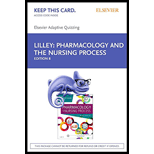
To describe:
The anatomy and physiology of the respiratory system.
Introduction:
The respiratory system consists of breathing organs that involve the exchange of air. It consists of a series of organs that perform the inhaling and exhaling of gases. Lungs are considered as the primary organs in the respiratory system. The main function of the respiratory system organs is to take oxygen and expel carbon dioxide. Oxygen is collected by the blood cells from the lungs and is transported to various parts of the body.
Explanation of Solution
The important function of the respiratory system is to take care of the intake of oxygen and remove the carbon dioxide from the cell. It requires the involvement of organs, tissues, and muscles to perform this function. The respiratory system consists of two divisions: the upper respiratory tract and the lower respiratory tract. Upper respiratory tract (URT): It is located in the thorax or the chest cavity. The URT is composed of structures such as the nose, oropharynx, larynx, and laryngopharynx. Lower respiratory tract (LRT): It is located within the thorax and is composed of the trachea, bronchial tree segments, and the lungs.
The four main accessory structures such as the rib cage, oral cavity, rib cage muscles, and the diaphragm of the upper and lower respiratory tracts involve the overall respiration function.
In the respiration process, the exchange of oxygen and carbon dioxide is performed across the alveolar semipermeable membrane. During this process, the oxygen is inhaled and carbon dioxide is exhaled from the lungs. The lungs are also used to warm, filter, and humidify the air. The inhaled oxygen from the lungs is delivered to the blood vessels of the circulatory system. The oxygen molecules are transferred to the red blood cells to carry out the cellular,
Thus, the anatomy of the respiratory system consists of the upper and lower respiratory tract, which involves gaseous exchange (with the help of the specialized structures).
Want to see more full solutions like this?
Chapter 37 Solutions
Elsevier Adaptive Quizzing for Pharmacology and the Nursing Process (Access Card), 8e
 Phlebotomy EssentialsNursingISBN:9781451194524Author:Ruth McCall, Cathee M. Tankersley MT(ASCP)Publisher:JONES+BARTLETT PUBLISHERS, INC.
Phlebotomy EssentialsNursingISBN:9781451194524Author:Ruth McCall, Cathee M. Tankersley MT(ASCP)Publisher:JONES+BARTLETT PUBLISHERS, INC. Gould's Pathophysiology for the Health Profession...NursingISBN:9780323414425Author:Robert J Hubert BSPublisher:Saunders
Gould's Pathophysiology for the Health Profession...NursingISBN:9780323414425Author:Robert J Hubert BSPublisher:Saunders Fundamentals Of NursingNursingISBN:9781496362179Author:Taylor, Carol (carol R.), LYNN, Pamela (pamela Barbara), Bartlett, Jennifer L.Publisher:Wolters Kluwer,
Fundamentals Of NursingNursingISBN:9781496362179Author:Taylor, Carol (carol R.), LYNN, Pamela (pamela Barbara), Bartlett, Jennifer L.Publisher:Wolters Kluwer, Fundamentals of Nursing, 9eNursingISBN:9780323327404Author:Patricia A. Potter RN MSN PhD FAAN, Anne Griffin Perry RN EdD FAAN, Patricia Stockert RN BSN MS PhD, Amy Hall RN BSN MS PhD CNEPublisher:Elsevier Science
Fundamentals of Nursing, 9eNursingISBN:9780323327404Author:Patricia A. Potter RN MSN PhD FAAN, Anne Griffin Perry RN EdD FAAN, Patricia Stockert RN BSN MS PhD, Amy Hall RN BSN MS PhD CNEPublisher:Elsevier Science Study Guide for Gould's Pathophysiology for the H...NursingISBN:9780323414142Author:Hubert BS, Robert J; VanMeter PhD, Karin C.Publisher:Saunders
Study Guide for Gould's Pathophysiology for the H...NursingISBN:9780323414142Author:Hubert BS, Robert J; VanMeter PhD, Karin C.Publisher:Saunders Issues and Ethics in the Helping Professions (Min...NursingISBN:9781337406291Author:Gerald Corey, Marianne Schneider Corey, Cindy CoreyPublisher:Cengage Learning
Issues and Ethics in the Helping Professions (Min...NursingISBN:9781337406291Author:Gerald Corey, Marianne Schneider Corey, Cindy CoreyPublisher:Cengage Learning





